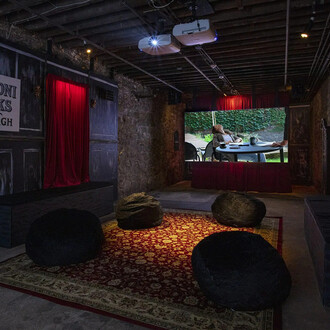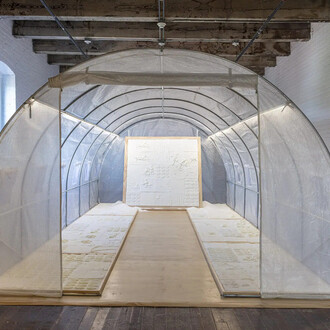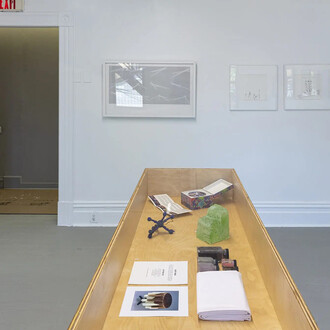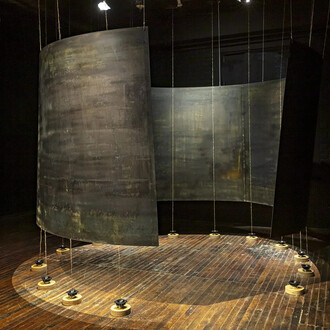Through a second set of double doors, walk first into a black corridor and then into an intensely lit space whose floor is covered in hot red dots. Three female mannequins painted white, their bodies and hair covered with the dots, are reflected in the mirrored walls and ceilings.
Yayoi Kusama, the Japanese master painter, sculptor, performance, and installation artist, began her artistic career in the 1950's. She lived and worked in New York City from the late 1950's through the early 1970's, where she was an influential participant in the avant-garde scene. Since her return to Tokyo, Kusama has lived by her own choice in a psychiatric hospital, maintaining an off-site studio with a staff of assistants. Her struggle with mental illness and "normalcy" is channeled into her work, which is all-consuming. Overflowing with repeating anthropomorphic shapes and patterns, her imagery recreates fantastic vision that only she can see. Like her artistic peers Joseph Beuys and Louise Bourgeois, Kusama has created transcendent work from an idiosyncratic personal vision pursued over the course of a lifetime. All of her work has come from a waking vision in which she sat at a table covered with a floral tablecloth, in a room covered with floral wallpaper, and saw that her hands, too, were covered with flowers. Her work explores the obliteration of the self, as the viewer becomes part of the work, reflected in mirrors, obstructed by organic forms, almost as if being sucked into the walls. Kusama's work has been seen in numerous exhibitions in the United States, Europe and Japan and she was the first artist to represent Japan with a solo show at the 1993 Venice Biennale.
















